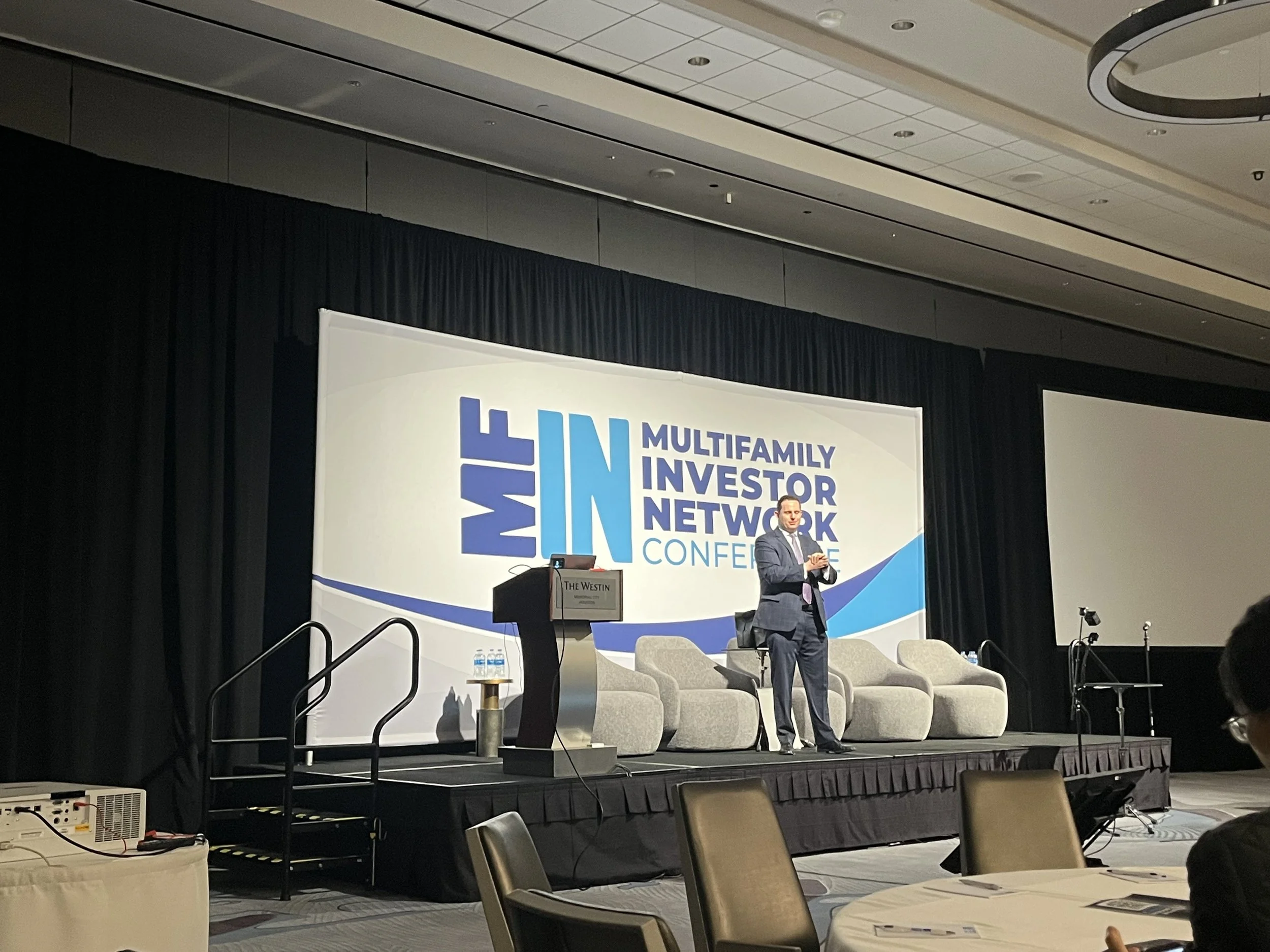2025-2026: A Generational Buying Opportunity?
Attending MFIN Houston Multifamily Conference 2025/02/01
I attended the MFIN Houston Multifamily Conference last week, and my conversations with industry experts provided some fascinating insights and key takeaways.
The real estate market is undergoing a pivotal transition as interest rates return to historical norms, creating both challenges and opportunities for investors. While commercial lenders have engaged in a "pretend and extend" strategy, allowing property owners to delay financial reckoning, this approach is expected to end in 2025. As a result, owners facing high mortgage rates and negative cash flow will be forced to either sell at a loss or find innovative ways to raise capital.
Interest Rates and Market Adjustments
The historically low interest rates of 2020-2022 (2-3%) led many investors to purchase properties at high valuations. However, with current interest rates ranging from 6-7% and cap rates adjusting to 6-8%, many property owners are now struggling. Floating rate mortgage holders are facing doubled or tripled mortgage payments, forcing them to either refinance or sell at a loss. Fixed-rate owners with balloon payments due in 3-5 years will face similar financial dilemmas.Inflation and Rising Costs
Inflation remains persistent due to factors such as rising labor costs, union labor settlements, and a crackdown on illegal immigration leading to labor shortages. Additionally, the push for onshore manufacturing and universal tariffs are contributing to higher costs across industries.Commercial Real Estate Challenges
As commercial lenders end their "pretend and extend" approach, many owners will have to restructure their debt or exit their investments. With property prices declining due to higher cap rates, defaults and distressed sales are expected to increase. This presents a significant opportunity for well-capitalized investors to acquire assets at a discount.
2025-2026: A Generational Buying Opportunity?
Despite these challenges, long-term market fundamentals remain strong. Population growth, a resilient economy, and ongoing demand for multifamily properties support the case for real estate investment. However, oversupply in key markets such as Austin, Dallas, and Houston has led to stagnating rents, with new construction projects not expected to be fully absorbed until 2026-2027.
Institutional investors, including firms like Blackstone, are sitting on large amounts of capital, waiting for the right opportunity to enter the market. Troubled syndicators have largely paused acquisitions, leaving room for strategic investors to capitalize on distressed sales.
Investment Strategies: What to Buy?
Given the competitive landscape, individual and smaller investors should focus on acquiring properties in the 50-150 unit range within primary and secondary markets. These properties offer a balance between scalability and reduced competition from large institutional players.
Conclusion
The next two years will be crucial for real estate investors. While short-term distress is expected, those who navigate these challenges effectively could secure valuable assets at significantly reduced prices. With distressed owners unable to hold long-term and the market reshuffling, 2025-2026 presents a rare buying opportunity for those with patience, capital, and strategic foresight.

